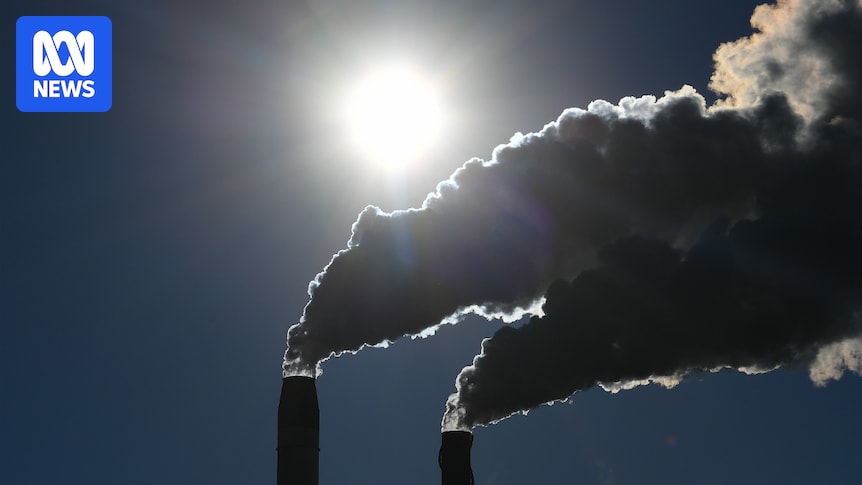
Climate and business groups in Australia are at loggerheads over the nation’s next major emissions target, with the Climate Change Authority (CCA) currently consulting on a potential 2035 emissions reduction target of between 65 and 75 percent. This target will be presented to the government ahead of its decision later this month.
Greens leader Larissa Waters has expressed strong opinions on the matter, stating that anything less than a 71 percent reduction would be a “backwards step.” She emphasized that the commitments from all states and territories already align with a 71 percent reduction, suggesting that a lower federal target would imply inaction from the government. “If the federal government comes out with something less than 71, that’s them saying they are going to do nothing and just rely on the states and territories,” Senator Waters told the ABC.
The Climateworks Centre reported last year that combined state and territory targets could achieve a 66 to 71 percent cut in emissions by 2035. Climate groups are urging the federal government to consider this as a minimum benchmark for its decision. Meanwhile, Climate Council chief executive Amanda McKenzie has stated that for the government’s target to maintain “any credibility,” it should aim for the upper end of the 65 to 75 percent range.
Business Concerns Over Economic Impact
In contrast, the Business Council of Australia (BCA) has expressed concerns that a target exceeding 70 percent could jeopardize Australia’s export trade and potentially drive businesses offshore. The BCA’s report warns that pushing for such a high target might necessitate the “premature” adoption of certain low-emission technologies, leading to economic drawbacks.
“What that would mean is that we’d have a smaller economy, but there would be no net benefit to global emissions because the companies that acquire our commodities would simply acquire them from somewhere else,” said BCA chief executive Bran Black.
The BCA’s analysis outlines the financial implications of various targets, indicating that a 70+ percent reduction would require an additional $200 billion in investment. It also warns of a potential loss in export value ranging from $100 to $150 billion annually, with the risk of businesses relocating to countries with less stringent climate regulations.
Climate Change Authority’s Perspective
The Climate Change Authority has previously indicated that a 75 percent target would align with efforts to limit global warming to 1.5 degrees Celsius. The authority has cautioned that current global commitments could lead to a temperature rise of approximately 2.9 degrees Celsius.
This divergence between business and climate groups presents a challenging scenario for the government, which must consider a target range that accounts for global uncertainties in climate commitments.
Policy and Legislative Considerations
While the Coalition debates the future of its net zero emissions by 2050 commitment, the BCA emphasizes the need for ambitious policies to accompany any new target. It warns that without such policies, Australia risks missing economic opportunities and facing a “disorderly and more costly transition to net zero.”
“Ambitious but achievable targets with the right policies to deliver them are key to Australia’s long-term competitiveness and prosperity,” stated Bran Black.
The BCA highlights that achieving a 60 percent reduction would depend heavily on government reforms to expedite environmental approvals for renewable projects and addressing a “sluggish” migration system to attract the necessary skilled workforce.
Climate Change Minister Chris Bowen has welcomed the BCA’s input, noting the importance of a clear and sensible transition plan. “This is a useful contribution to our national conversation and demonstrates that the lowest cost option is a clear, sensible transition plan that seizes on the opportunities before us, rather than risking delay and disorder,” Mr. Bowen said.
Legislation and Future Steps
Despite the debate over the 2035 target, Climate Minister Chris Bowen has stated that it will be both “ambitious” and “achievable.” However, he has not committed to legislating the target, suggesting that the government will assess the parliamentary pathway after announcing it.
Senator Waters has indicated that her party will withhold support until the proposed target is revealed. “We have to see what target they are proposing first — is it going to be a strong target that will keep us safe and really lead us into a prosperous economy with all of the investment and clean energy and manufacturing that that could bring, or is it going to be a low target that coal and gas love that keeps their profits going but puts the rest of us in harm’s way?” she questioned.
Climate Council’s Amanda McKenzie has advocated for legislating the 2035 target to provide certainty for businesses and ensure transparency and accountability. “It is really important when you are serious about a policy to put it into law. It gives certainty for investors, it provides transparency and accountability,” she said.
Economic and Workforce Implications
The BCA’s report outlines the economic and workforce challenges associated with higher emissions targets. It estimates that achieving a 60 percent target would require an additional 59,000 skilled workers over five years and 82,000 by 2050, amid competing demands from other sectors such as housing, infrastructure, and defense.
The report also notes that Australia is lagging in the development of large-scale wind, solar, and battery projects, as well as new transmission infrastructure. It suggests that the most cost-effective way to electrify the grid would involve significantly increasing wind power generation to avoid over-reliance on solar and storage.
As the government prepares to announce its 2035 emissions target, the debate between business and climate groups underscores the complex balance between economic growth and environmental responsibility. The decision will likely have significant implications for Australia’s future climate policy and international standing.






